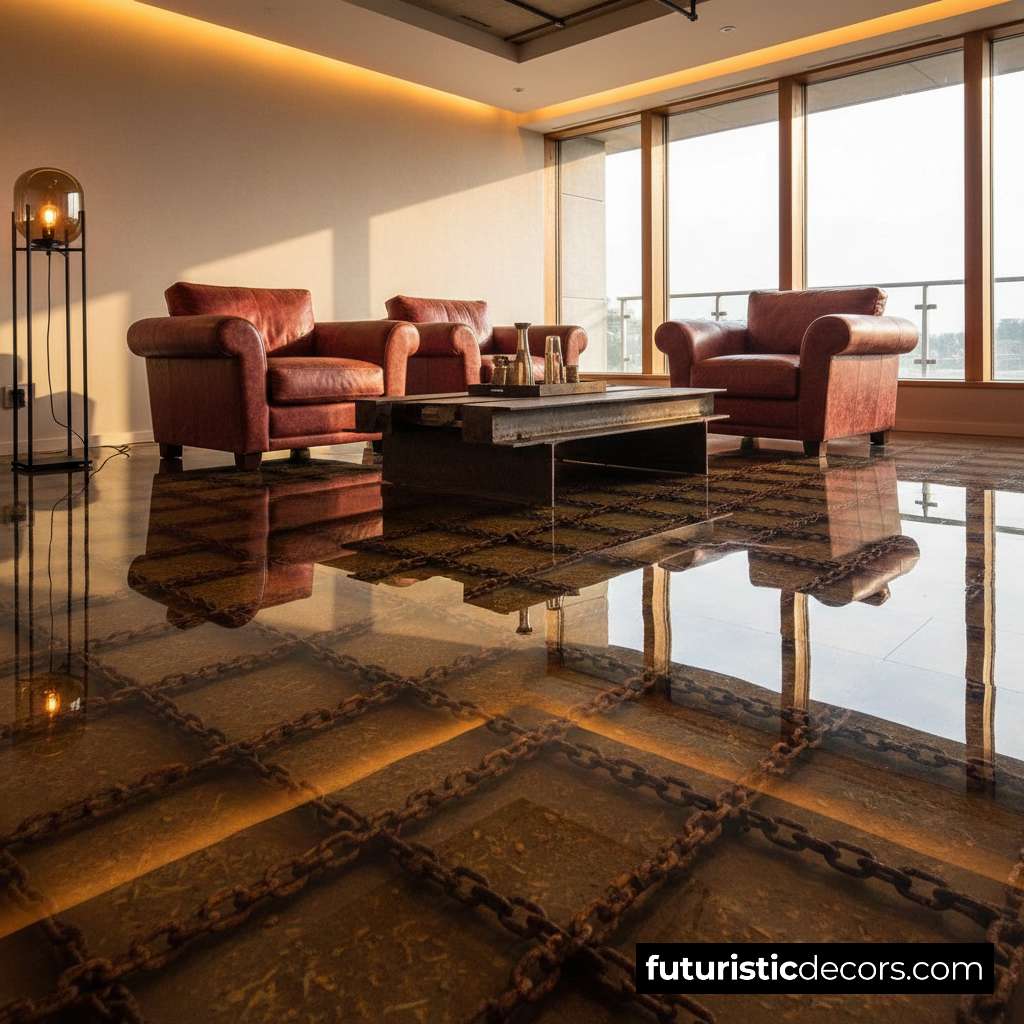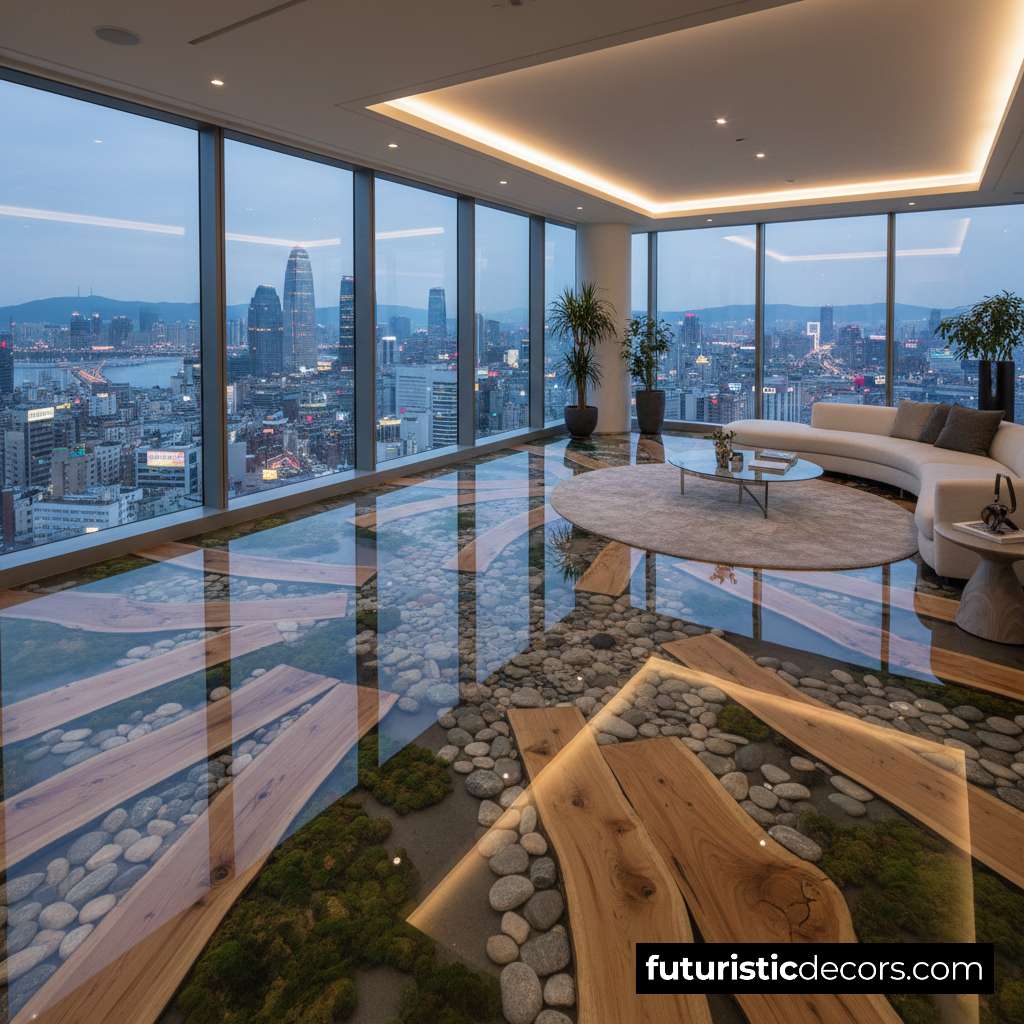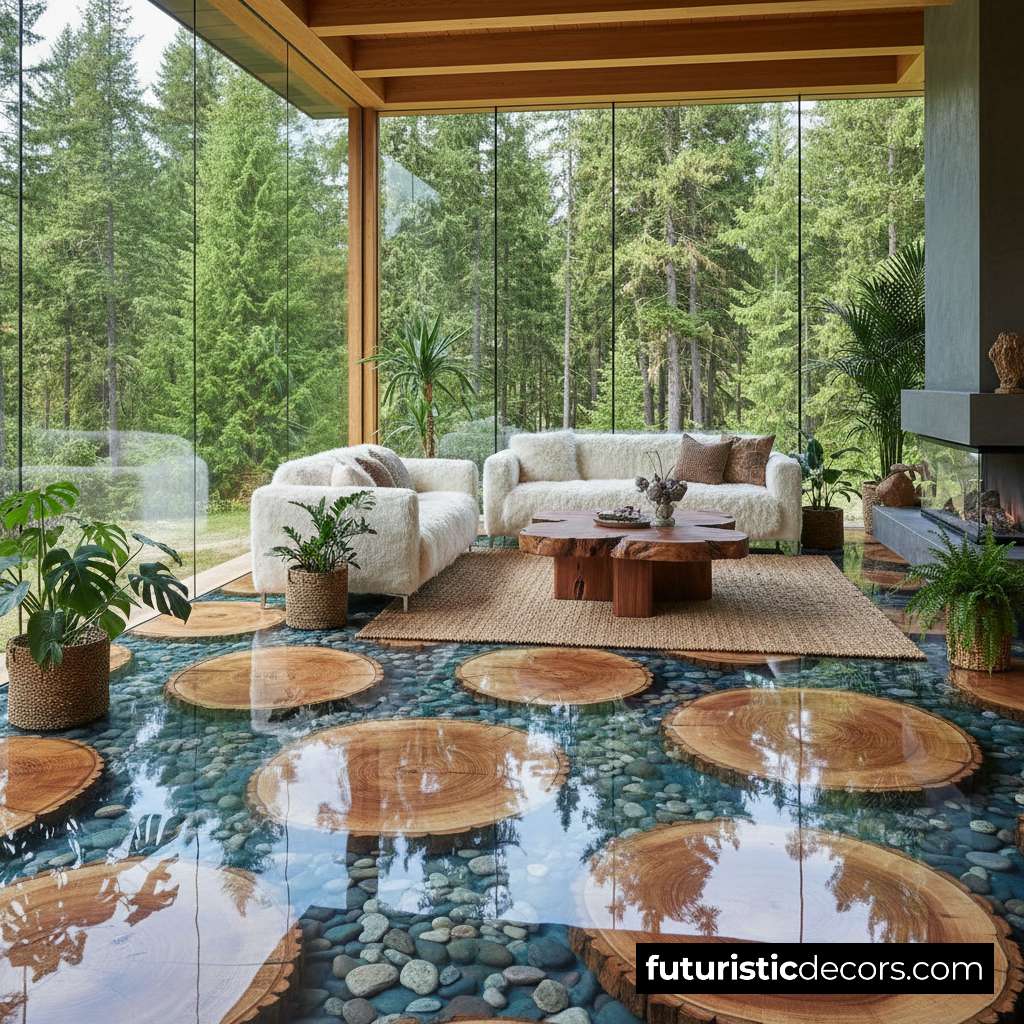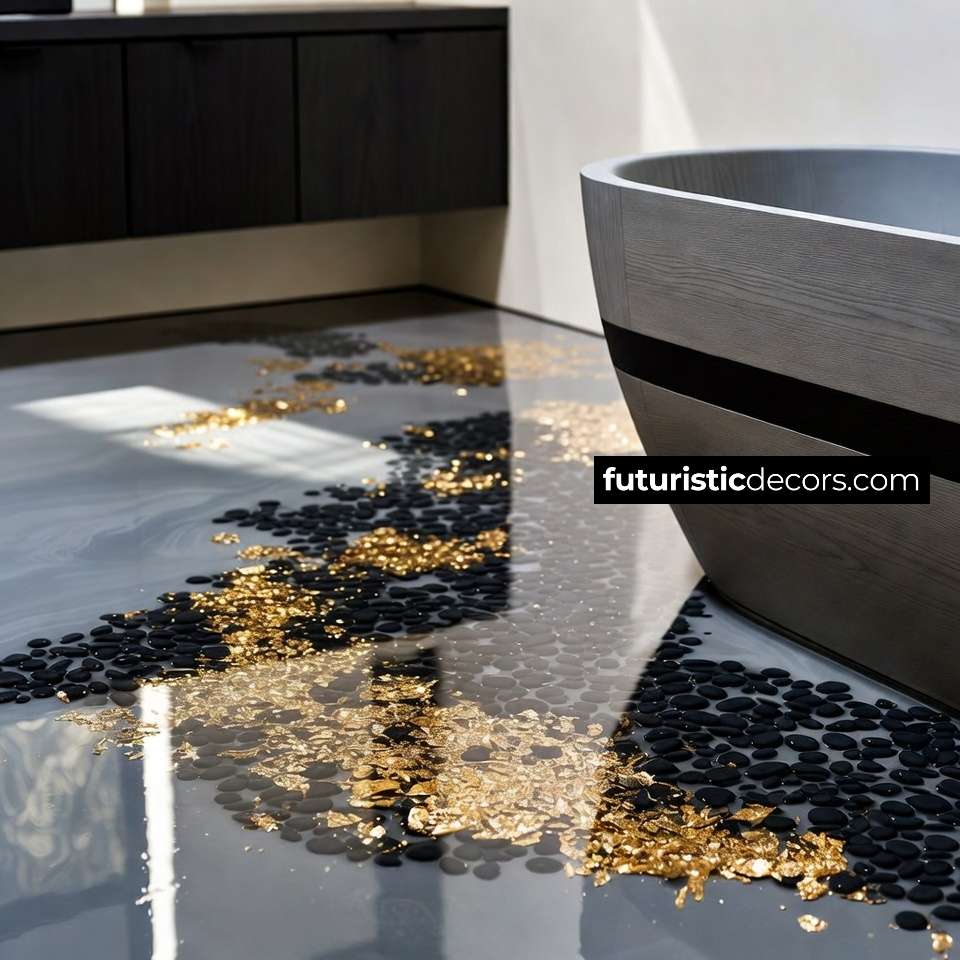The Origins of the Doppelganger Concept
Before diving into the design of the Doppelganger Chandelier, it is crucial to understand the concept of the doppelgänger itself. The term “doppelgänger” is a German word meaning “double-goer” or “double walker.” In folklore, it refers to a spectral double of a living person, an ominous sign often believed to be a harbinger of death or misfortune. While the mythology of the doppelgänger has appeared across various cultures, it often carries a dark connotation, representing a shadowy figure or alter ego that mirrors one’s appearance but not their intentions.
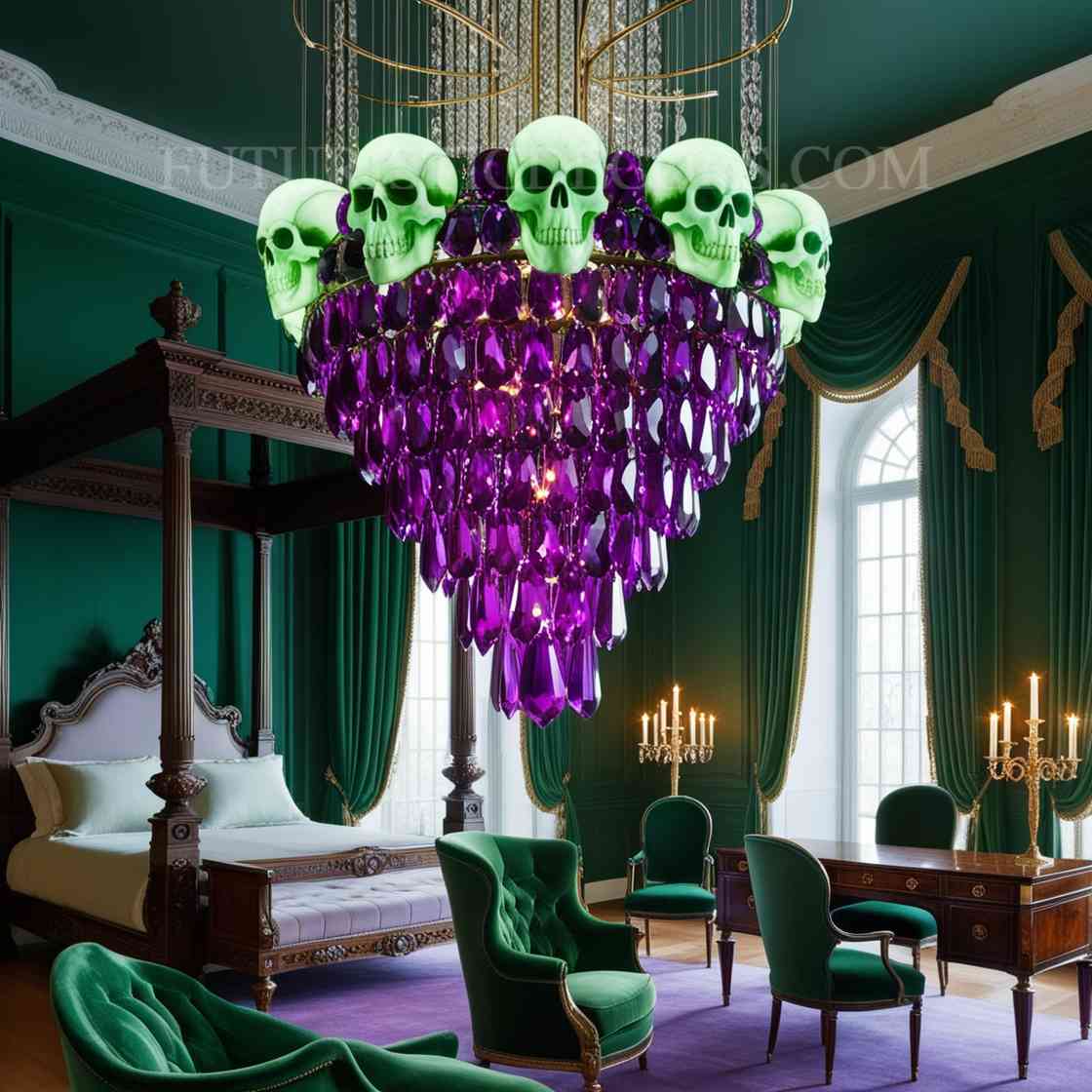
In literature and pop culture, the doppelgänger theme has been explored as a narrative device to reflect inner turmoil, identity crises, and the darker aspects of the human psyche. For example, in Edgar Allan Poe’s “William Wilson” and Fyodor Dostoevsky’s “The Double,” the doppelgänger symbolizes a sinister reflection of the self, often culminating in dramatic confrontations. In design, particularly in the Doppelganger Chandelier, this concept is expressed through duality, mirroring, and the tension between beauty and brutality.
The Barbaric Inspiration Behind the Design
The Doppelganger Chandelier is not just a lighting fixture but a provocative work of art. At its core, the chandelier embodies a “barbaric” aesthetic, using raw and aggressive forms to invoke a sense of primitive power and primal emotion. The use of skulls as the primary design element connects this piece to ancient traditions and cultures where skulls were revered as symbols of mortality, strength, and even spiritual transcendence.
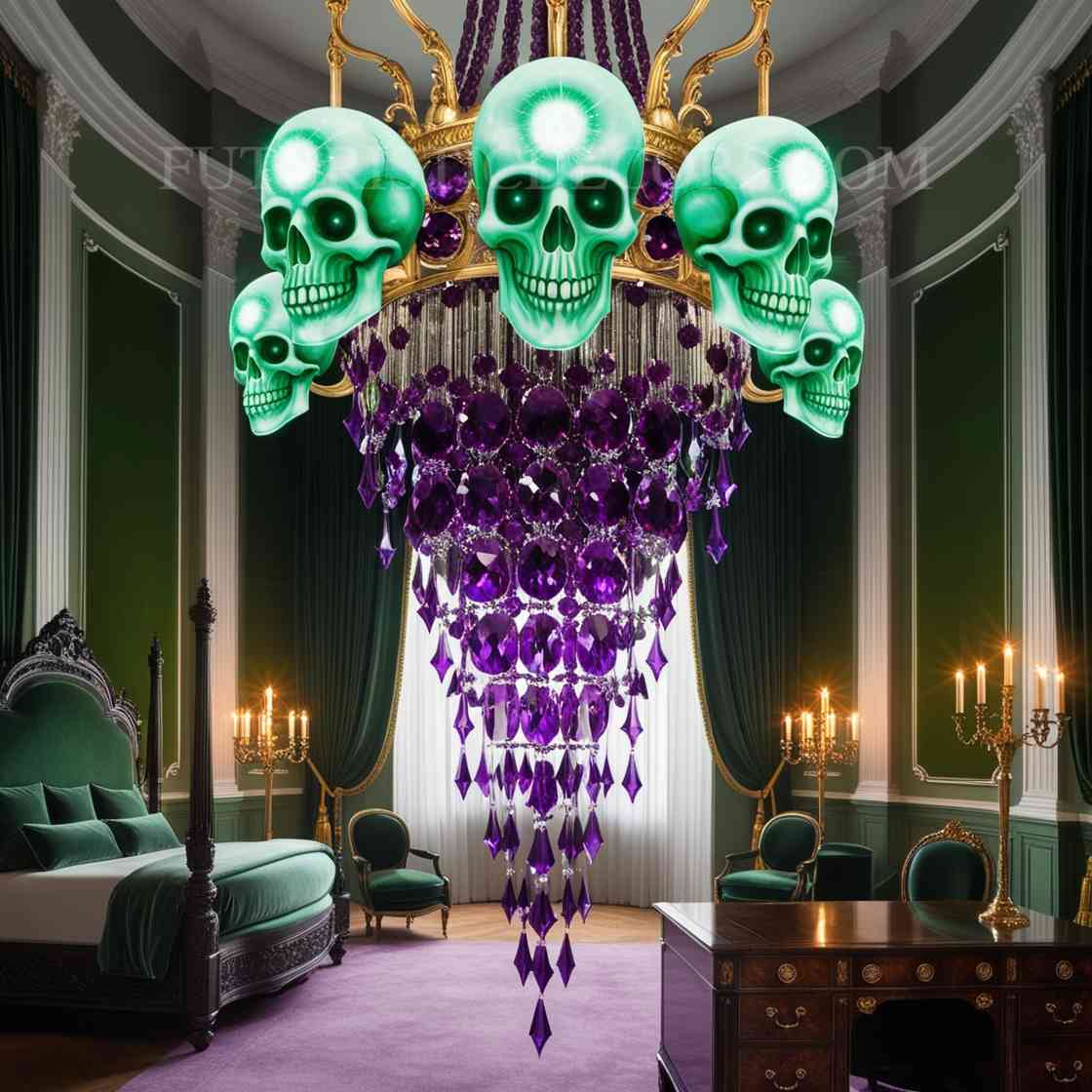
In many ancient civilizations, skulls were seen as powerful talismans or relics. They were often used in rituals to honor ancestors or as trophies of war, symbolizing victory over enemies. The brutal yet reverent treatment of skulls in these contexts aligns with the Doppelganger Chandelier’s artistic approach. It evokes the wild, untamed aspects of humanity and nature, reminding us of life’s fragility and the ever-present shadow of death. In this chandelier, the skulls are not just decorative objects but vessels carrying a deep, primal meaning that resonates with themes of mortality and identity.
The “barbaric” element of this chandelier lies not only in the use of skulls but also in the way they are arranged. The design often features multiple skulls arranged in a circular pattern, mimicking the form of traditional chandeliers but with a savage twist. These skulls may be stylized or made to look as realistic as possible, emphasizing their connection to human mortality. The rough, unpolished surfaces of the skulls contrast with the smooth, refined lines of traditional chandeliers, creating an aesthetic tension that challenges viewers’ perceptions of beauty.
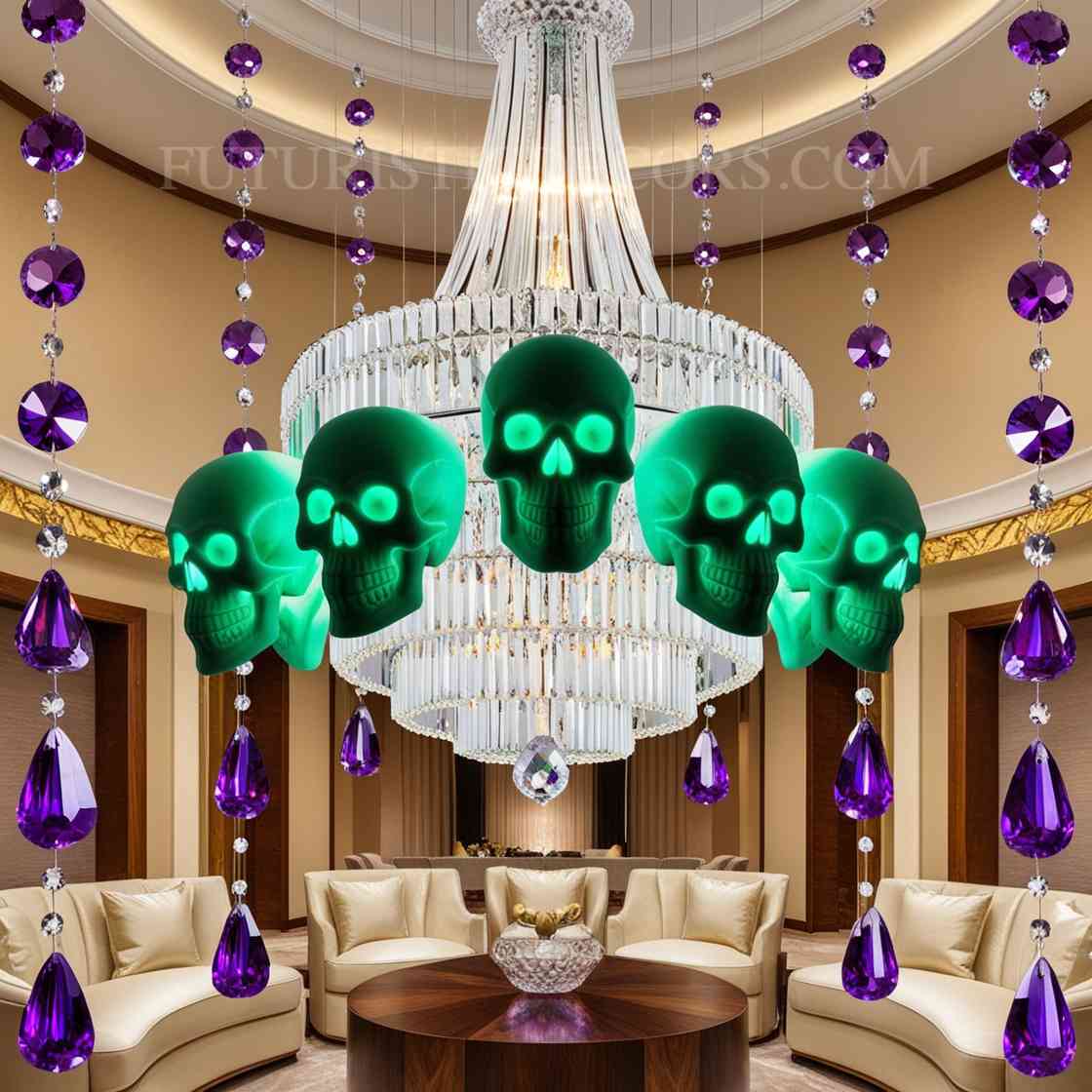
Materials and Craftsmanship: From Skull to Sculpture
Creating a Doppelganger Chandelier is an intricate process that requires a fusion of artistic vision and skilled craftsmanship. While the idea of using skulls might seem grotesque to some, the craftsmanship behind this design elevates the chandelier from a mere shock piece to a sophisticated work of art.
Materials often include resin, metal, or actual bone (in some high-end custom versions). The skulls may be cast in resin for durability and lightweight construction or sculpted from metals such as bronze or aluminum for a more industrial, long-lasting look. In some luxurious custom orders, animal skulls, particularly those of goats or cattle, may be used, lending an air of authenticity and primal energy to the piece.
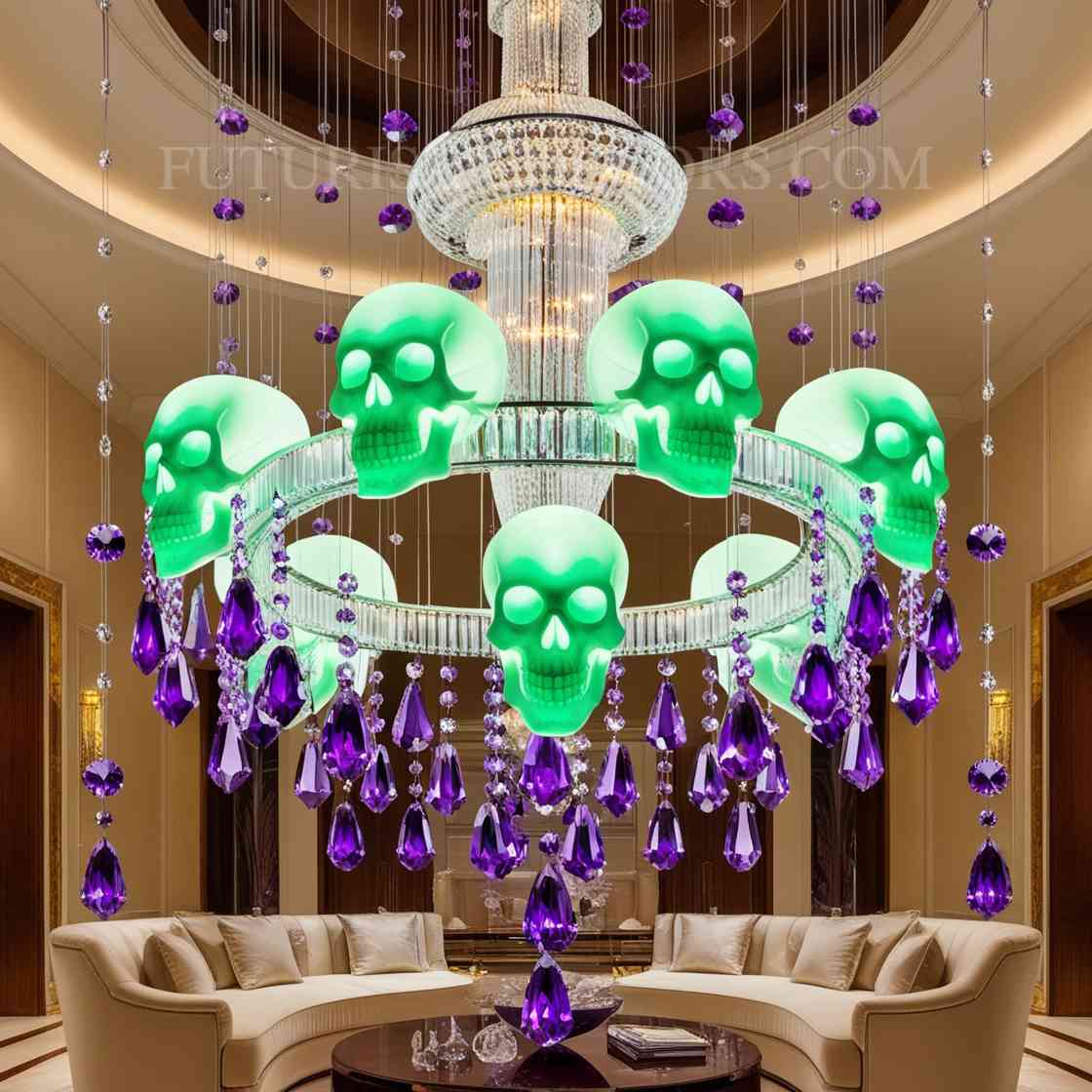
Each skull is meticulously designed to capture every detail, from the sharp edges of the jawline to the deep-set eye sockets. Artists and craftsmen must work with precision to replicate the anatomical accuracy of the skull while ensuring that it complements the chandelier’s overall structure. Lighting elements are often embedded within or around the skulls, creating a haunting glow that emanates from the eyes and mouth, as though the chandelier itself is alive with an eerie energy.
The structural design is crucial as well. While traditional chandeliers rely on symmetry and balanced proportions, the Doppelganger Chandelier uses irregular forms and asymmetry to create a more chaotic, unsettling visual experience. Skulls might hang at slightly different angles, contributing to the chandelier’s “barbaric” aesthetic and reflecting the unpredictability and disorder often associated with doppelgänger folklore.
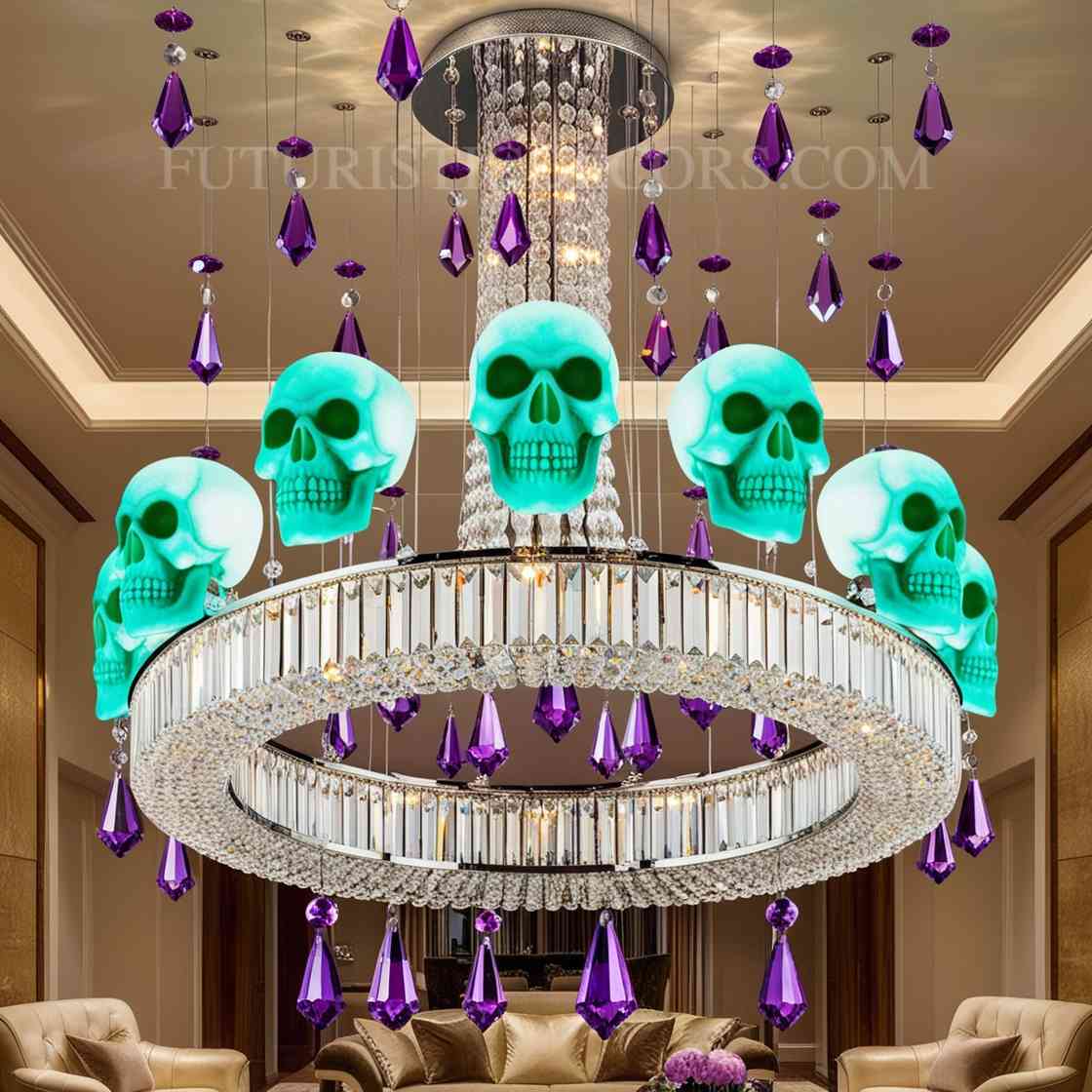
The Aesthetic Appeal of the Doppelganger Chandelier
While the concept of a chandelier made from skulls might initially seem macabre or gothic, the Doppelganger Chandelier has a unique aesthetic appeal that transcends its barbaric origins. Its design offers an unusual blend of darkness and beauty, allowing it to fit into a wide range of interior design styles, from ultra-modern to gothic chic.
One of the most compelling aspects of the Doppelganger Chandelier is its ability to evoke powerful emotions. Lighting has always been about more than just illumination; it sets the mood and atmosphere of a space. The Doppelganger Chandelier does this in a way that few other chandeliers can. It brings a sense of drama, mystery, and even danger to a room, making it the perfect centerpiece for those looking to make a bold design statement.
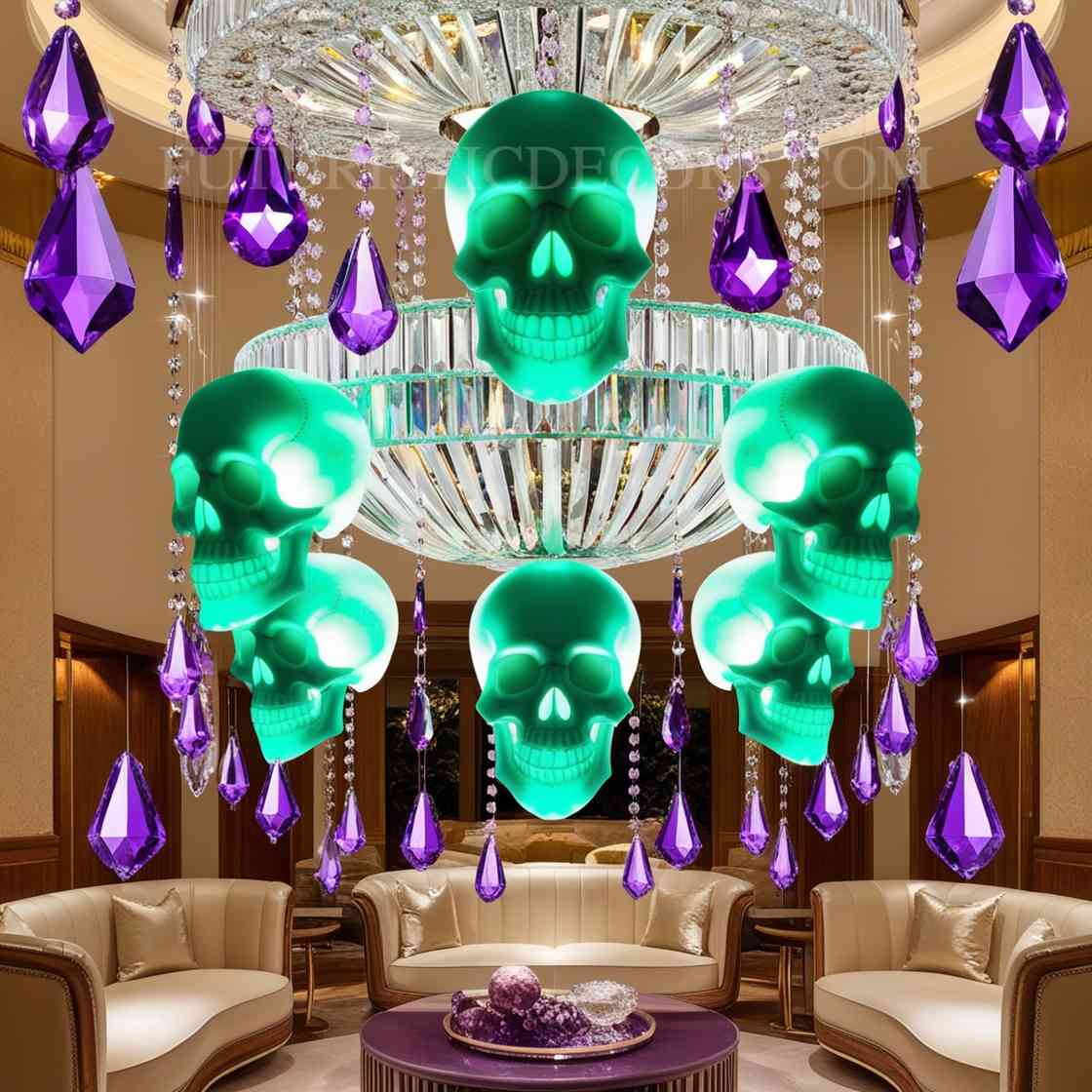
The chandelier’s skulls may be polished to a high shine, giving them an almost jewel-like quality, or left matte and rough, emphasizing their rawness. In either case, the interplay of light and shadow on the skulls creates a mesmerizing effect. The light emitted from the fixture is often softer and more diffused than traditional chandeliers, as it filters through the hollow spaces of the skulls. This creates an otherworldly glow that adds to the chandelier’s eerie charm.
In modern interiors, the Doppelganger Chandelier can serve as a stark contrast to minimalist design elements. Its savage, complex form stands out against the clean lines and neutral color palettes of contemporary spaces, becoming a focal point that commands attention. In gothic or dark-themed interiors, it enhances the moody atmosphere, adding layers of texture and history to the room. It is this versatility in design that has made the Doppelganger Chandelier a sought-after piece among interior designers and homeowners with a taste for the unusual.
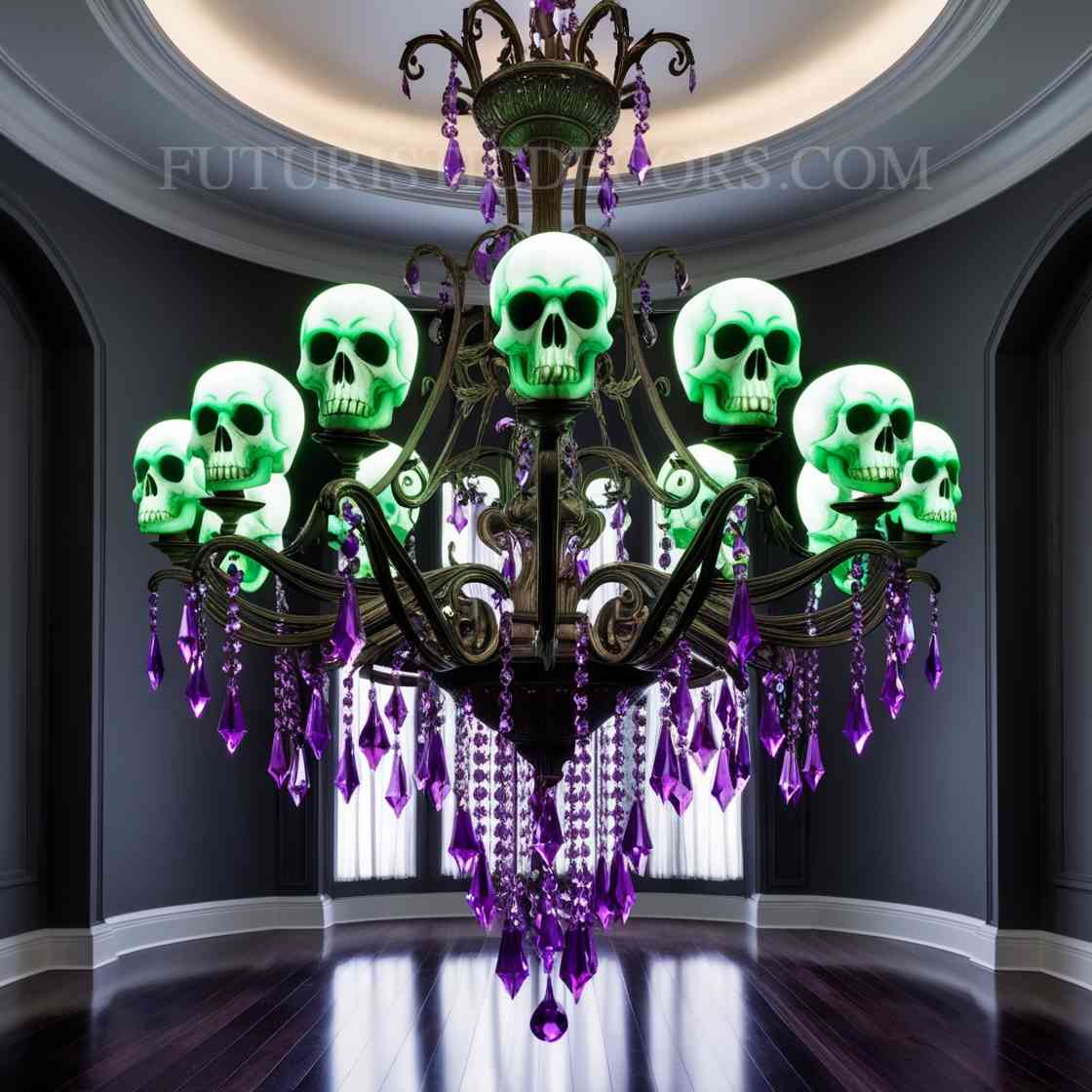
The Symbolism Behind the Doppelganger Chandelier
At its core, the Doppelganger Chandelier is not just about aesthetics or design; it is about symbolism. The doppelgänger theme in the chandelier reflects the duality of human nature—the coexistence of beauty and horror, life and death, light and darkness.
The skull, a universal symbol of death, is central to this theme. In many cultures, the skull is seen as a memento mori, a reminder of the inevitability of death. The Doppelganger Chandelier forces us to confront this reality, but it does so in a way that is both beautiful and terrifying. The light emanating from within the skulls symbolizes the fragile boundary between life and death, reminding us that life is temporary, but art, like the chandelier, can immortalize it.

Furthermore, the doppelgänger itself represents the tension between self and shadow, between the persona we present to the world and the darker, hidden aspects of our psyche. In this chandelier, the duality is reflected in the way the skulls simultaneously attract and repel the viewer. They are both captivating and unsettling, a perfect embodiment of the doppelgänger myth.
The chandelier can also be interpreted as a commentary on identity and the self. The idea of the doppelgänger, a double that mirrors us but carries a darker, more sinister side, speaks to the complexity of human identity. The Doppelganger Chandelier brings this concept to life through its design, encouraging us to reflect on the duality within ourselves. It invites us to ask questions about who we are, what we fear, and how we present ourselves to the world.
The Doppelganger Chandelier in Modern Design
The Doppelganger Chandelier is more than just a decorative piece; it represents a broader trend in modern design that seeks to challenge traditional notions of beauty and art. In recent years, there has been a growing interest in designs that explore darker, more primal themes. Designers and artists are increasingly turning to the macabre, the grotesque, and the barbaric as sources of inspiration, creating pieces that provoke, disturb, and engage the viewer on a deeper level.

This trend can be seen in various aspects of modern design, from fashion to architecture. The Doppelganger Chandelier fits into this movement perfectly, offering a bold, unapologetic take on what a chandelier can be. It is a piece that defies convention, rejecting the idea that chandeliers must be elegant, refined, or delicate. Instead, it embraces the raw, untamed aspects of life and death, offering a design that is both beautiful and brutal.
The Doppelganger Chandelier has found a home in various spaces, from high-end luxury homes to trendy restaurants and bars. It is particularly popular in spaces that embrace a darker aesthetic, such as gothic-themed interiors or industrial lofts. However, its versatility means that it can also be used in more unexpected settings, such as modern minimalist homes, where its dramatic design provides a striking contrast to the clean, simple lines of the surrounding space.
Exploring the Cultural Significance of Skulls in Art and Design
To fully appreciate the Doppelganger Chandelier, it’s important to understand the cultural significance of skulls in art and design. Across history, skulls have served as potent symbols in numerous cultures, often representing mortality, power, and the cycle of life and death. From ancient rituals to contemporary art, skulls carry rich and layered meanings that lend depth to designs like the Doppelganger Chandelier.
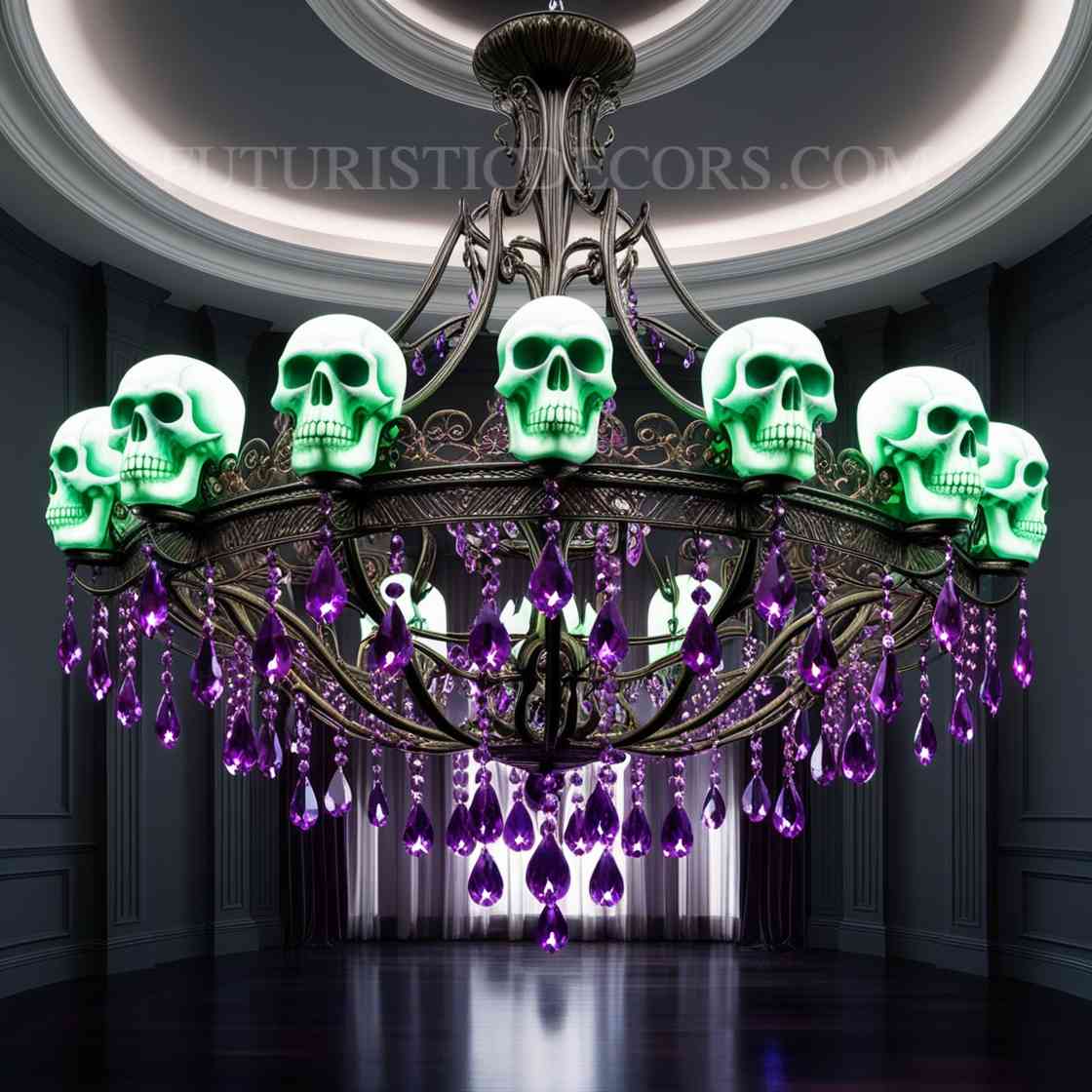
In ancient cultures, particularly in Mesoamerican societies like the Aztecs and Mayans, skulls were revered as symbols of both death and rebirth. Human skulls were displayed as part of ceremonial rites, representing the cyclical nature of life and the continuation of the human spirit beyond physical death. This dual symbolism aligns closely with the thematic exploration of the doppelgänger in the chandelier—both serve as reminders of the delicate balance between life and death, between the physical and the ethereal.
In modern times, skulls have also been embraced by various subcultures, including gothic and punk movements. Skulls in these contexts often symbolize rebellion, a rejection of societal norms, and an embrace of the darker, more visceral aspects of life. The Doppelganger Chandelier taps into this cultural legacy, transforming the skull from a simple symbol of death into a complex design statement that challenges viewers to confront their relationship with mortality.
The chandelier, in many ways, mirrors these cultural interpretations. Its barbaric yet artistic nature reflects the ongoing fascination with the macabre and the role of death in human experience. Through its design, the Doppelganger Chandelier becomes more than just an art piece—it’s a cultural artifact that connects us to ancient traditions, while simultaneously reflecting contemporary tastes for edgy, unconventional design.
The Process of Customizing a Doppelganger Chandelier
One of the most intriguing aspects of the Doppelganger Chandelier is the potential for customization. As a piece that blends art, craftsmanship, and personal expression, many designers and homeowners choose to commission bespoke versions of the chandelier to better fit their unique aesthetic and spatial requirements. The customization process involves various elements, from material selection to the overall arrangement of the skulls and lighting fixtures.
For those who seek a highly personalized piece, the first step in customization typically involves selecting the type of skulls to be used in the design. While some might prefer stylized or abstract representations of skulls, others may opt for highly detailed, anatomically accurate renditions. Animal skulls can also be integrated into the design for those seeking a more primal or rustic vibe, or even mythical skull shapes, adding a fantastical element to the chandelier.
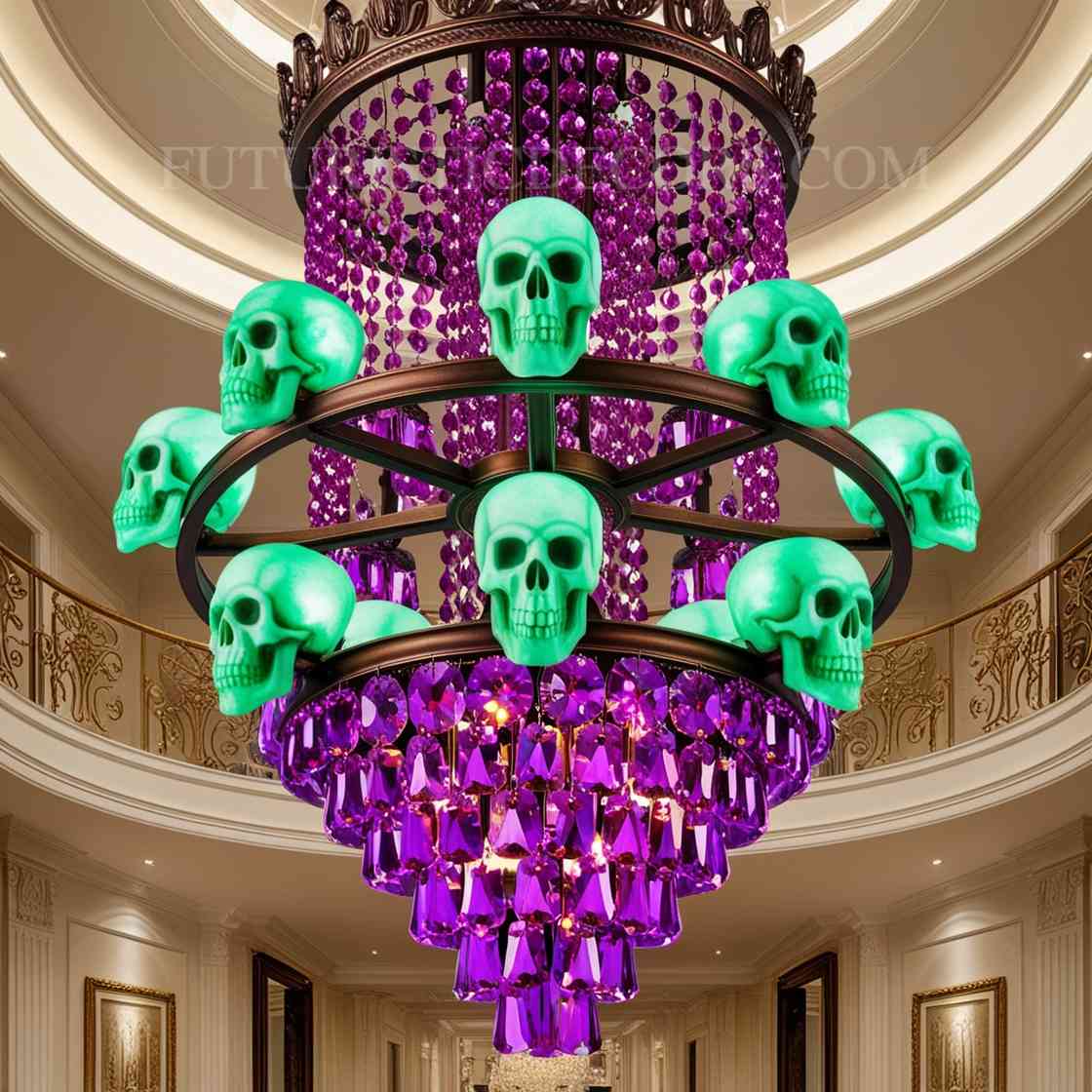
The finish of the chandelier is another key point of customization. Some may opt for a raw, unfinished look to enhance the barbaric aesthetic, while others might prefer a more polished, metallic finish for a sleek, modern take. Metal skulls with intricate engraving or patina can elevate the chandelier from rustic to refined, making it adaptable to different interior design styles.
Lighting options are also diverse in the customization process. Designers can choose whether the chandelier emits a warm, soft glow that creates a moody atmosphere, or if it should be outfitted with brighter lights for a more dynamic and dramatic effect. LED lights can be integrated into the skulls’ eye sockets or mouths, casting eerie, otherworldly shadows on the surrounding walls.
The Doppelganger Chandelier in Popular Media and Entertainment
The popularity of the Doppelganger Chandelier in pop culture and entertainment has contributed to its growing demand in both residential and commercial spaces. Its macabre yet stylish design makes it a favorite in themed venues such as gothic nightclubs, haunted houses, and even high-end restaurants with avant-garde interior designs. It has also found its way into film sets, often symbolizing wealth and power with a dark, eccentric twist.
In television shows and films that explore themes of the supernatural, horror, or fantasy, the Doppelganger Chandelier is often used to create an atmosphere of mystery and danger. Its unique form fits perfectly in settings where the boundaries between the living and the dead blur—such as in haunted mansions, dark forests, or ancient castles. The chandelier’s eerie glow adds to the tension and suspense in these scenes, acting as both a functional light source and a thematic prop that reinforces the narrative’s mood.
This visibility in pop culture has only increased the chandelier’s allure. Designers are now seeing the Doppelganger Chandelier not just as a lighting fixture, but as an iconic statement piece that captures the imaginations of those who appreciate dark, moody, and provocative design elements.
Where the Doppelganger Chandelier Fits in Interior Design Trends
The Doppelganger Chandelier taps into several key interior design trends that have emerged in recent years, particularly the move toward more personalized, unconventional, and storytelling-driven spaces. People are no longer content with generic, mass-produced decor. Instead, they want their homes or commercial spaces to reflect their personalities, their values, and their unique tastes. The Doppelganger Chandelier fits perfectly into this movement by offering a lighting solution that is bold, memorable, and rife with symbolic meaning.
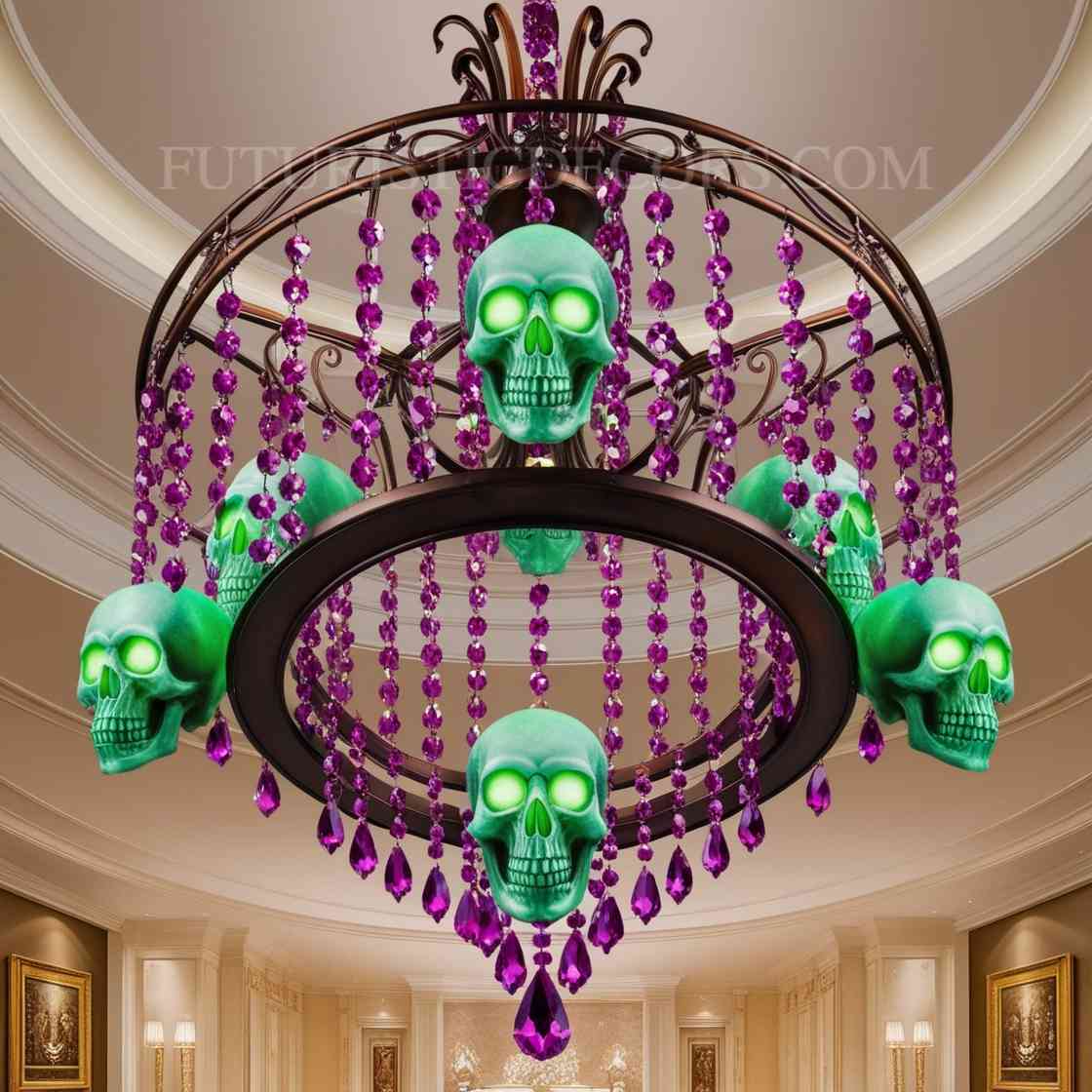
One trend the chandelier aligns with is the rise of the “dark luxe” aesthetic—a design style that blends dark, moody color palettes with opulent materials and artistic touches. This aesthetic embraces the idea of luxury that doesn’t rely on bright, cheerful spaces but rather explores the beauty found in shadowy, atmospheric environments. The Doppelganger Chandelier, with its macabre skulls and dramatic lighting, is the perfect statement piece for those who wish to cultivate this dark, luxurious look.
Moreover, the Doppelganger Chandelier also appeals to the growing trend of maximalism. In contrast to minimalism’s clean lines and simplicity, maximalism encourages bold patterns, textures, and forms that make a strong visual impact. The chandelier’s intricate design and powerful symbolism make it an ideal piece for maximalist interiors, where it can stand out amid a riot of textures and colors without feeling out of place.
Finally, the growing interest in sustainable and artisanal products has also contributed to the chandelier’s popularity. Many bespoke Doppelganger Chandeliers are crafted by artisans who use traditional techniques to create one-of-a-kind pieces, often incorporating upcycled materials or sustainable resources. This focus on craftsmanship and sustainability resonates with consumers who value quality and ethical production in their decor choices.
Incorporating the Doppelganger Chandelier into Residential Spaces
Though the Doppelganger Chandelier might seem more suited to commercial or themed spaces, it can also make a striking addition to residential interiors. Homeowners looking to create a dramatic focal point in their living or dining rooms can use the chandelier as a centerpiece that draws the eye and sparks conversation.
In modern or minimalist homes, the chandelier can be used as a stark contrast to simple, clean-lined furniture. For instance, placing the Doppelganger Chandelier above a modern glass dining table or in a spacious living room with sleek, neutral-toned furniture creates a visual juxtaposition that highlights the chandelier’s unique form. Its bold presence disrupts the calm, controlled atmosphere of minimalism, adding a touch of rebellion and intrigue.
For more eclectic or gothic-inspired homes, the Doppelganger Chandelier can be integrated into spaces that already embrace dark, moody aesthetics. Paired with deep velvet furnishings, richly textured rugs, and dark wood finishes, the chandelier becomes the crown jewel of the room. The skulls’ eerie glow and the chandelier’s intricate design complement the richness of these materials, creating a space that feels luxurious, mysterious, and otherworldly.
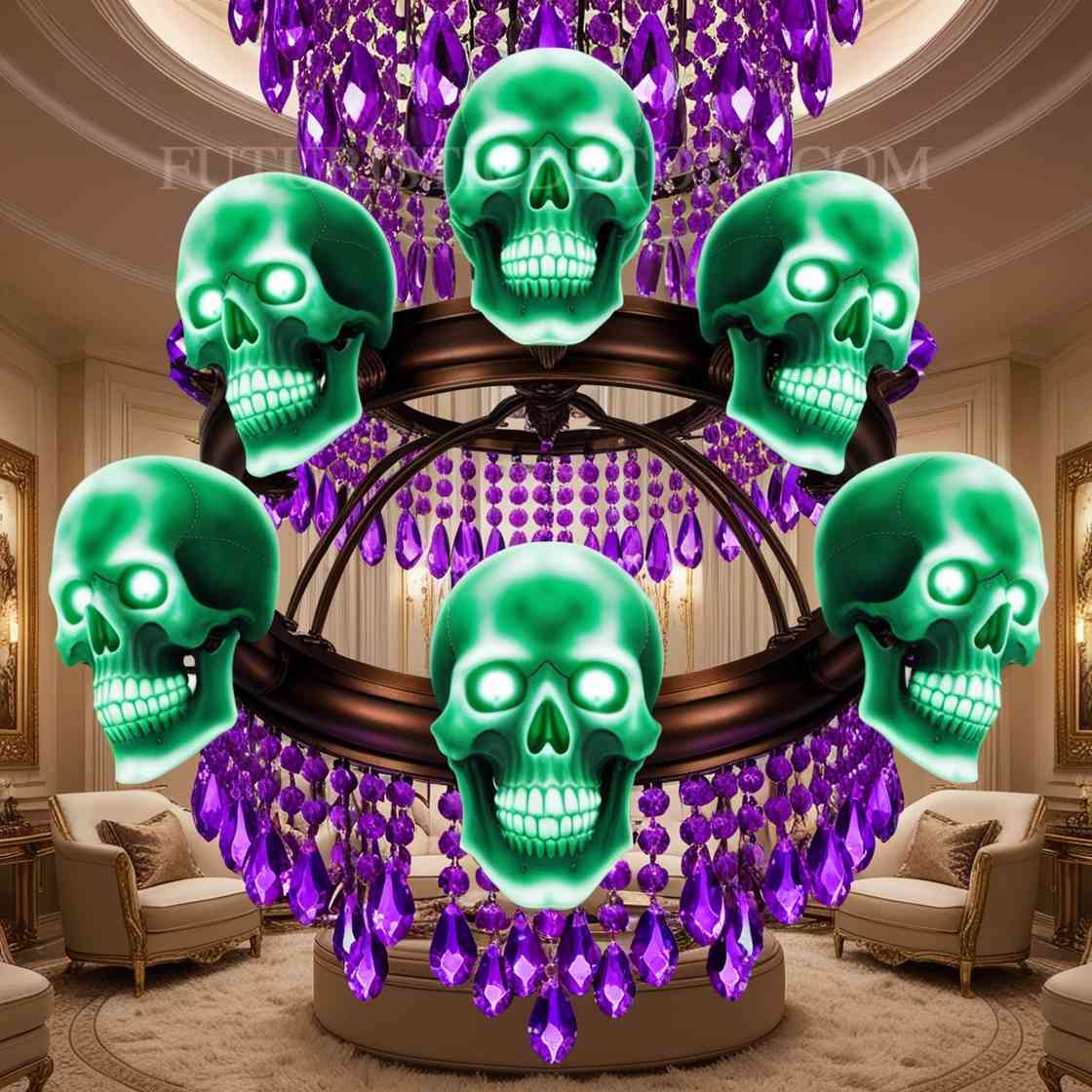
The Doppelganger Chandelier and the Future of Lighting Design
As design trends continue to evolve, the Doppelganger Chandelier represents the future of lighting in a world that values personalization, bold artistic statements, and deeper symbolic meaning in everyday objects. As the line between art and functional design continues to blur, lighting fixtures like the Doppelganger Chandelier will likely play an even more significant role in how we conceptualize and interact with interior spaces.
In the future, we can expect to see even more avant-garde chandeliers that push the boundaries of form and function. Inspired by the success of the Doppelganger Chandelier, designers may experiment with other symbolic or mythological motifs, blending sculpture and lighting to create immersive, multi-sensory experiences. These pieces will not only illuminate a space but also tell a story, encouraging viewers to engage with their environments on a deeper level.
Moreover, the chandelier’s success points to a growing appetite for designs that challenge our notions of beauty, embracing the darker, more primal aspects of human experience. As consumers seek out objects that resonate with their identities and values, the demand for bold, unconventional designs like the Doppelganger Chandelier will likely continue to rise.
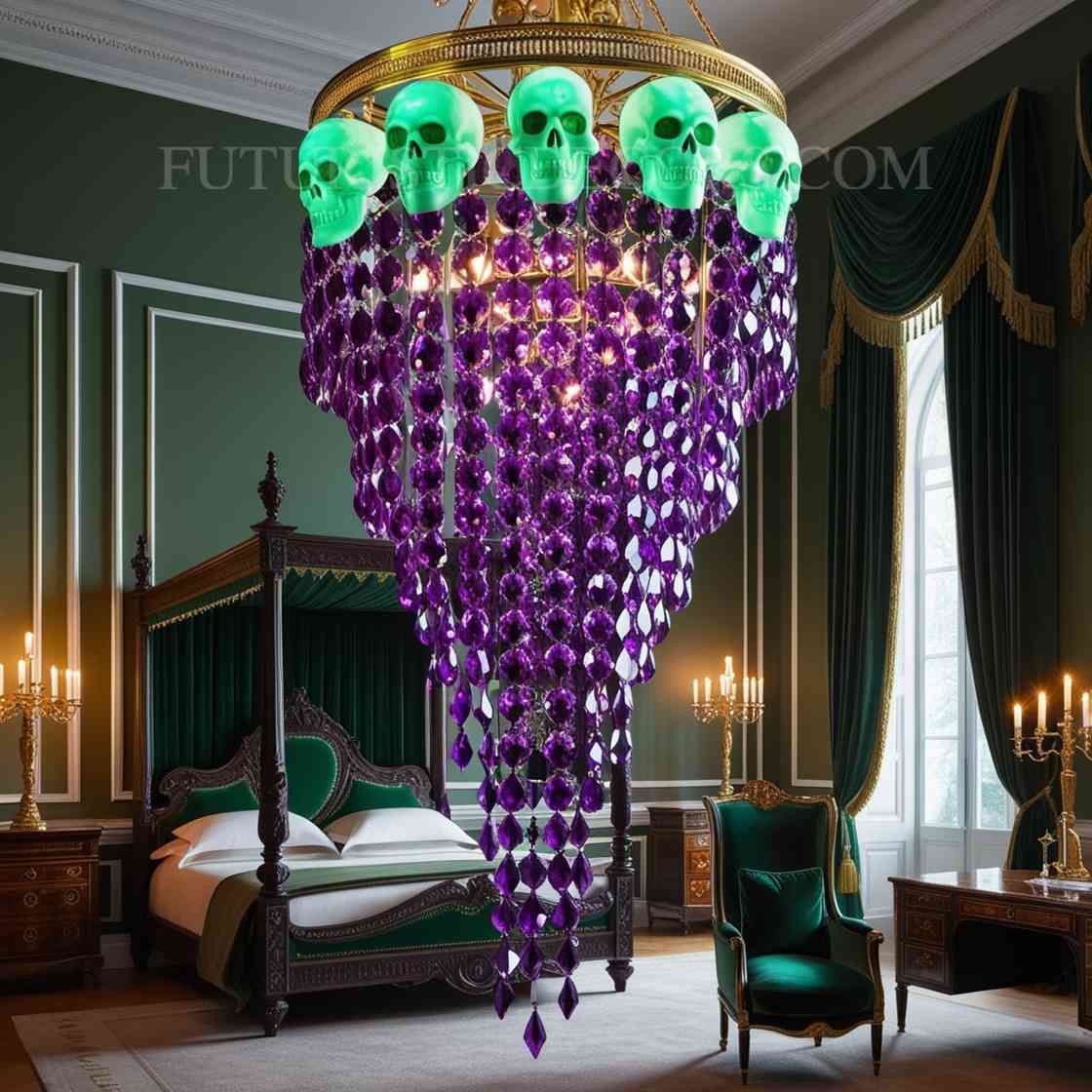
Conclusion: The Power and Appeal of the Doppelganger Chandelier
The Doppelganger Chandelier is a masterpiece of modern design, blending the barbaric with the beautiful in a way that is both unsettling and captivating. Its use of skulls as a central design element challenges traditional notions of what a chandelier can be, while its intricate craftsmanship elevates it to the level of fine art. More than just a lighting fixture, the Doppelganger Chandelier is a symbol of duality, mortality, and the complex nature of human identity.
For those bold enough to embrace its savage elegance, the Doppelganger Chandelier offers a powerful design statement that is sure to leave a lasting impression. Whether used as the centerpiece of a gothic-inspired interior or as a dramatic contrast in a modern minimalist space, this chandelier is a testament to the power of art to provoke, inspire, and transform.
In the end, the Doppelganger Chandelier is more than just a chandelier—it is a reflection of the darker side of the human experience, a reminder that beauty and horror are often two sides of the same coin. It is a piece that invites us to confront our own fears and desires, to explore the shadowy depths of our psyche, and to find beauty in the most unexpected places.


